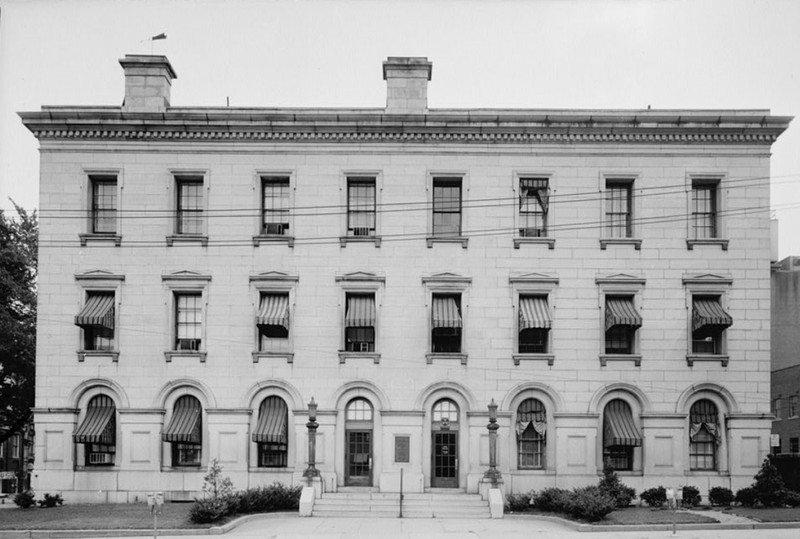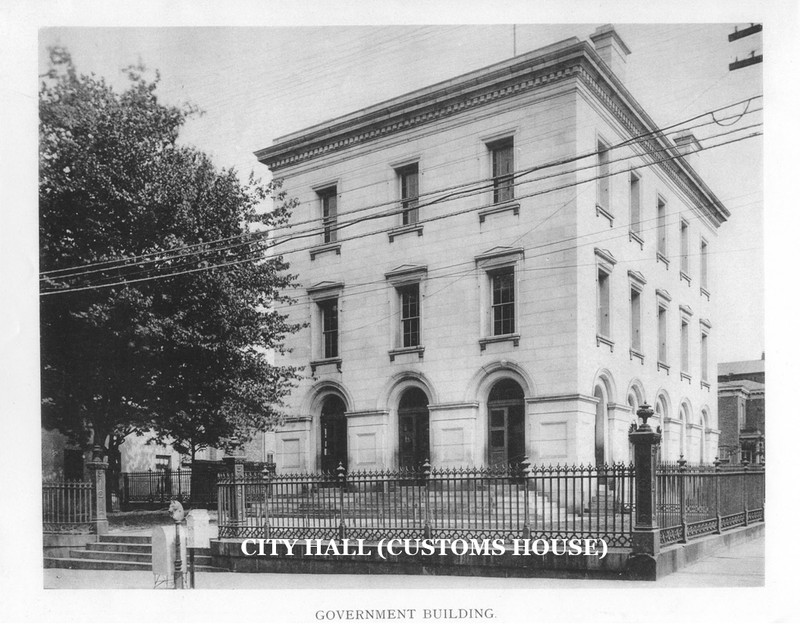Petersburg City Hall
Introduction
Text-to-speech Audio
Images
Petersburg City Hall

Petersburg City Hall (Old Customs House)

Backstory and Context
Text-to-speech Audio
In 1850, with a population of 14,010, Petersburg became the third independent city in Virginia. It was during the 1850’s that the city's tobacco factories expanded, with wholesale and commission houses flourishing. Cotton factories and iron foundries also boomed at this time. Prosperity was reflected in changes in the municipal streetscape, resulting from a surge of building activity. The city's economic prosperity was to be halted by the Civil War.
The Customs House and Post Office served as a federal building for only a short period, becoming the headquarters of the Confederate Army for the duration of the conflict. During the Siege of Petersburg, the building was used as a signal station, to view the fighting on the city's eastern front. On April 3, 1865, the day of the city's surrender, the Second Michigan Sharpshooters raised the U.S. flag over the building, bringing an end to one of the longest battles of the war.
In 1870, the federal government appropriated $10,000 for repairs and improvements to the building; further work on the building occurred between 1908-1910, when a three-bay addition was added to the building's south elevation. The addition provided for an extensive remodeling of the interior but was most sympathetic to the exterior, which it duplicated. By 1936, the post Office was moved to Franklin Street, and in 1938 the building became the Petersburg City Hall, a function it continues to serve.
Situated on the corner of Tabb and Union Streets, the Petersburg City Hall is a rectangular (46 ' x 100’), three-story building, eight bays by three bays, three bays having been added to the south wall in 1908. The building is faced with Dinwiddie granite over brick core walls and is exemplary of the Italian Renaissance Revival style, as designed by federal architect Ammi B. Young.
The front (west) entrance is approached by four stone steps leading to a granite stoop at the front entry. The stoop projects 4 feet from the wall and is flanked on each side by a 10-foot, cast-iron lamp pole with a glass-enclosed, cast-iron lamp on the top. The north entry is similarly approached and is also flanked by cast-iron lanterns, which are attached to the wall. The front (west) entrance is comprised of two single doors, each with twelve lights. Above each door is an arched transom of six lights blocked off by plywood paneling. The north exterior entrance consists of a double doorway with a six-light, arched transom above the entry. According to the original specifications and early photographs, several alterations have been made to the exterior doors. The north elevation originally consisted of three double doors, which have been replaced with windows.
All the windows are identical for each respective floor. The first-floor windows are treated as an arcade and are single-hung with only the bottom sash moveable, each total window being four lights by five high. The top of the window is framed in a stone arch, terminating at a molded spring projecting belt course which extends the perimeter of the building. The second-story windows are double-hung, 6 x 6 sash. A stone pediment caps each window; the jambs and sills are of molded stone. Below each sill are two scrolled iron brackets, also found on the third floor. The third-floor windows are similar to the second but lack the pediments. A large stone denticulated cornice extends the entire perimeter of the building, broken by four chimneys - two on the front and two on the rear. The building is covered by a small hipped roof.
Sources
Lamphere, George N. The U.S. Government: Its Organization and Practical Workings. Philadelphia, 1881
McRae, John M. & Biallas, Randall J. “Petersburg: Old United States Custom House and Post Office.” Historic American Buildings Survey Report, National Park Service, 1968. Copy on file at Virginia Historic Landmarks Commission.
Scott, James G. and Wyatt, Edward A., IV. Petersburg’s Story: A History. Petersburg, VA: Titmus Optical, 1960.
